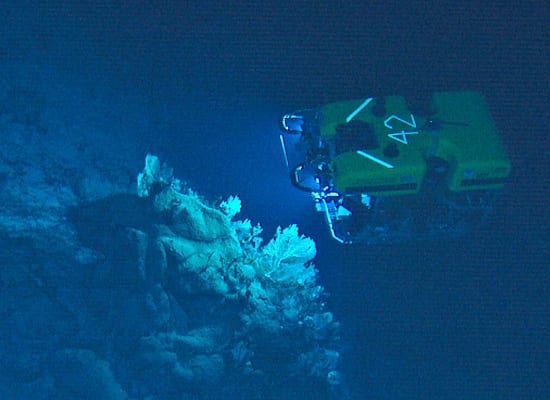Trawling Leaves Lasting Scars on Deep Ocean Coral Habitat
December 1, 2007
More than a decade after fishing stopped near the Corner Rise Seamounts in the North Atlantic, researchers have found that the seafloor still has patches that are almost completely devoid of life. During an expedition to study deep-sea corals, Woods Hole Oceanographic Institution (WHOI) biologist Rhian Waller and colleagues found that several coral communities were extensively damaged, with evidence that the scars were caused by fishing trawlers. Corner Rise is a cluster of ancient volcanoes at least a half-mile below the sea surface and 1,200 miles from shore. Using a remotely operated vehicle to survey the volcanic slopes, the research team found broken branches of bubble gum corals, which usually grow in abundance atop seamounts. The entire top of Kükenthal Peak was wiped clean; on Yakutat Seamount, the number of live corals was negligible. Though fishing stopped many years ago, the summits “no longer support habitat-forming corals in any significant numbers,” the biologists wrote in the Journal of the Marine Biological Association of the United Kingdom. As fishing grounds close to shore become over-fished and increasingly regulated, deep-sea habitats have become more appealing for fishing fleets. At the same time, deep-sea corals grow very slowly—perhaps an eighth of an inch per year—and some can live for thousands of years. The combination of a stressed fishing industry and slow-growing corals, the biologists note, adds up to trouble.
Related Links

